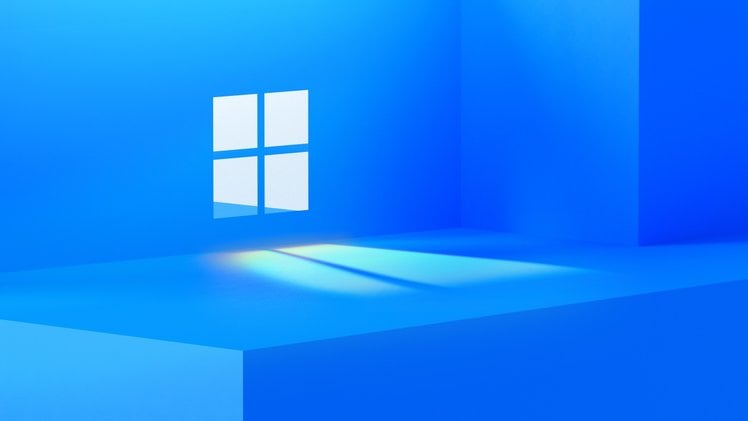
It’s nearly time for a next-generation version of the world’s most popular desktop operating system – Microsoft Windows.
The update is known as Windows 11. A massive leak of the whole new operating system preceded an official reveal on 24 June although that version is incomplete compared to what’s set to come up.
We’ve been hands-on with that early version anyway as most of the key Windows 11 features are present.
Windows 11 release date
- Release seemingly set for October 2021
- Available to Windows Insiders as an early build
We’re expecting the Windows 11 release date to be during October 2021, with a public beta before then in the summer. Microsoft’s own Windows 11 screenshots show a date of
A very early build is now being rolled out available to Windows Insiders – people registered in a pre-release programme.
Windows 11 will reportedly move to a single major feature update per year rather than the two we currently get with Windows 10. Of course, there will still be security updates for all, too.
Windows 11 system requirements
- Processors from 2016-17 onwards
- Support for TPM (Trusted Platform Module) required
- Microsoft’s PC Health Check app will tell you if your PC is supported
We’ve covered this off in more detail in our Windows 11 system requirements feature but this time Microsoft says you can only install it on processors made from roughly 2016-17 onwards – for Intel PCs that’s 8th generation Core and up (plus certain Celeron, Pentium and Atom chips).
The more stringent requirements are thanks to the security measures that processors made from that date onwards have, support for a TPM (Trusted Platform Module) is officially mandatory – though it seems it may be possible to get around the restrictions.
Coincidentally, you’ll now need to have a Microsoft Account to set up Windows 11 Home though this isn’t the case for other versions.
Windows 11 features
- New Start menu and taskbar design
- Widgets means there’s lots of scope for customisation
- Snap groups enable you to set up your screen how you want
Windows 11 features various interface tweaks including a new Start menu that looks more like an app launcher, more rounded corners, snap controls that let you pin a window to a spot in your screen (and snap groups), a new Widgets area and icon in the taskbar and a new Windows setup experience.
Snap groups and Snap layouts are particularly cool – enabling you to have greater flexibility and choice over how you set up your display with multiple windows. Windows can now be arranged in different ways, while Windows will remember your layouts so you can easily get back to them in future. Windows 11 will also remember how you laid out your windows on an external display and give you access to that layout when you re-dock.
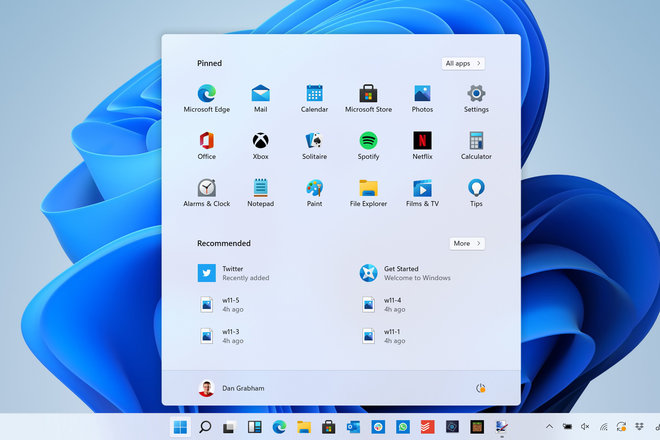
Many icons have been updated, too, giving everything a fresh feel compared to Windows 10. However, in terms of functionality, it’s not a huge leap on from Windows 10 – more an iteration.
The key design change is the new Start menu which you can see above. The taskbar icons are now centralised (you can move them back if you want). The Start menu also shows you your most recently touched files.
The new Widgets bar – which you can resize – is essentially the replacement for the Start menu live tiles from Windows 10, enabling personalised information such as relevant news stories to be delivered. There should be a lot of different options here come launch as developers will also be able to contribute.
On tablets, snapped Windows change orientation if you move to portrait from landscape. Touch targets have also been made larger so it’s easier to use for touch.
Android apps will also now be able to be installed on Windows 11 via the Microsoft Store which itself will be redesigned. The apps will come from the Amazon Appstore, so there won’t be quite the range that you’d get on Google Play. It’s been reported that this process won’t be easy since you will need to sign into an Amazon account to download it first.
Microsoft Teams will, however, be baked into the operating system it seems, seemingly now being preferred to the officially forgotten Skype.
For gaming, Windows 11 supports Auto HDR from Xbox Series X which adds HDR to games built for DirectX 11 or later.
Microsoft wants to position Windows as a platform for other stuff more than ever. Microsoft says it will welcome any type of app to the store – not just ‘native’ store apps even if developers use their own ways of taking customer payments.
Interestingly there are a bunch of features missing from Windows 11 which we’ve detailed in a separate feature but these include Live Tiles – replaced by the Widgets sidebar – Tablet Mode, Timeline and Cortana being front and centre. There are also a bunch of other apps no longer present and these include the old Internet Explorer.
Why is Windows 11 coming now?
- Windows 11 has been around since 2015.
- No fundamental changes since then.
- Pressure to sell more PCs?
Microsoft has been stuck on Windows 10 for quite some time – since 2015 in fact. The reason for that is fairly simple, Microsoft has iterated Windows 10 through twice-yearly updates, but not brought forth any fundamental changes.
It also probably wanted to stick with a successful version of Windows given that while 2001’s Windows XP and 2009’s Windows 7 were massively successful, the in-between versions of 2006’s Windows Vista and Windows 8/8.1 (2012-13) weren’t that well received.
However, pressure from Microsoft’s partners probably forced the change, keen to sell more PCs to buyers who want to upgrade to the new OS.
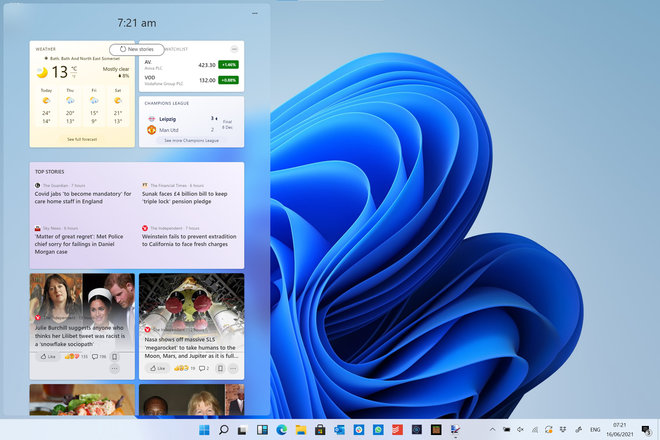
We’ve known for a while that 2021 would bring a refresh to the Windows design, but it now appears to be bearing fruit as a new version codenamed Cobalt, officially called Windows 11. The interface refresh itself is apparently known as Sun Valley internally at Microsoft.
What’s happened with Windows 11 so far??
28 June 2021 – October release?
Although Microsoft hasn’t yet said when Windows 11 will be with us, it seems set that the new OS will get an October release date. A lot of the screenshots Microsoft has put out around the release have a date of 20 October on the taskbar, with the time set to 11.11.
24 June 2021 – The official reveal
Microsoft has officially revealed Windows 11 and it’s broadly similar to the leaked build. The main differences are the announcement of Android app support as well as the confirmation that the Microsoft Store will be redesigned from the ground up. We also got more details on how tablets and touch will be handled with greater touch targets and windows that re-orientate themselves when you swap from landscape to portrait, for example.
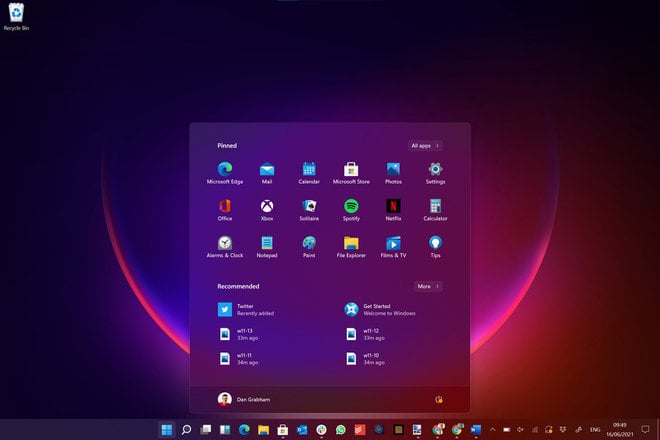
15 June 2021 – Windows 11 leaks in its entirety
Firstly, a Baidu user posted two screenshots of Windows 11, revealing a Windows 10X-like central Start menu with rounded corners (the menu can also be put back in its traditional position on the left). Almost at the same time, the ISO (installation file) of the OS was leaked online via various download sites.
We and others were able to install it.
10 June 2021 – Windows 11 will have a startup sound
Microsoft has dropped a rather over-the-top video (above) with Windows startup sounds from the past slowed down by 4,000 percent – yes really. It’s a direct teaser for the What’s Next for Windows digital event so we can only assume that Windows will, once again, have a startup sound (as Windows 10 X was supposed to have).
3 June 2021 – Microsoft confirms that there will be a ‘next-generation of Windows’
Microsoft sent out invitations to the media to its What’s Next for Windows digital event on 24 June, saying the key line “where the company will unveil the next generation of Windows”. The event teaser also had a reflection of the Windows logo on it with the crossbar taken out from the ‘window’ meaning that the logo reflection showed as two vertical bars – aka 11.
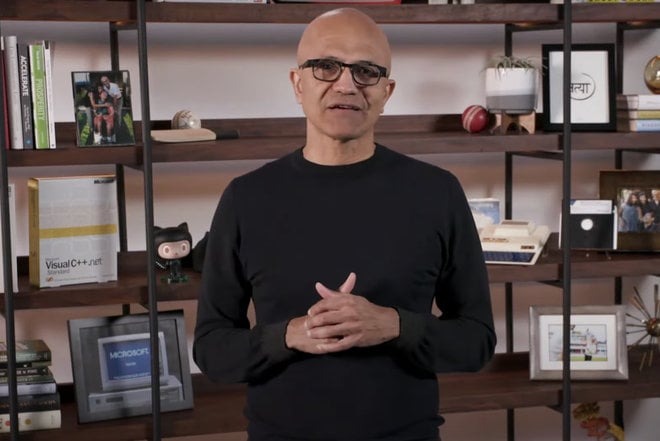
25 May 2021 – Microsoft teases the next version of Windows will be unveiled ‘very soon’
There was nothing about Windows ‘client’ in the agenda for Microsoft’s Build developer event this year, which we found rather odd. But the answer came during the opening keynote by Microsoft CEO Satya Nadella.
“Soon we will share one of the most significant updates of Windows of the past decade to unlock greater economic opportunity for developers and creators,” teased Nadella. “I’ve been self-hosting it over the past several months, and I’m incredibly excited about the next generation of Windows.”
Clearly Microsoft wants to reinvigorate its app store. Nadella added: “We will create more opportunity for every Windows developer today and welcome every creator who is looking for the most innovative new, open platform to build and distribute and monetize applications. We look forward to sharing more very soon.”
This almost certainly ties into Project Reunion, revealed in 2020 as Microsoft’s latest attempt to sort out the mess of Windows apps
8 May 2021 – Microsoft reportedly kills Windows 10X, its answer to Chrome OS
At its 2019 Surface event – Microsoft revealed the Android-toting Surface Duo which launched, plus Surface Neo. That device was supposed to run Windows 10 X, a cut-down version of Windows that was reported in 2020 to be delayed but has now been cancelled. We may see some of its features in Windows 11 though.
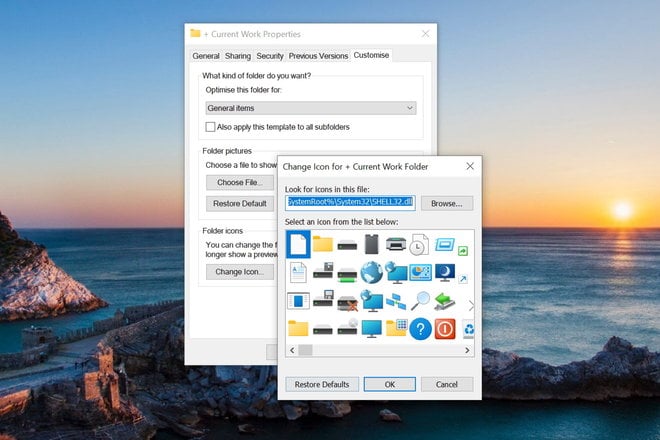
6 May 2021 – Microsoft shows icon updates
The latest Insider Preview build of Windows shows Microsoft revising icons that have been around since the Windows 95 era ahead of the new Windows release. Microsoft has been revising numerous Windows File Explorer icons during early 2021. Stalwart Windows icons like This PC, Documents and Recycle Bin have been given a new look.
This follows up on the new streamlined Start menu shown off in early 2020.
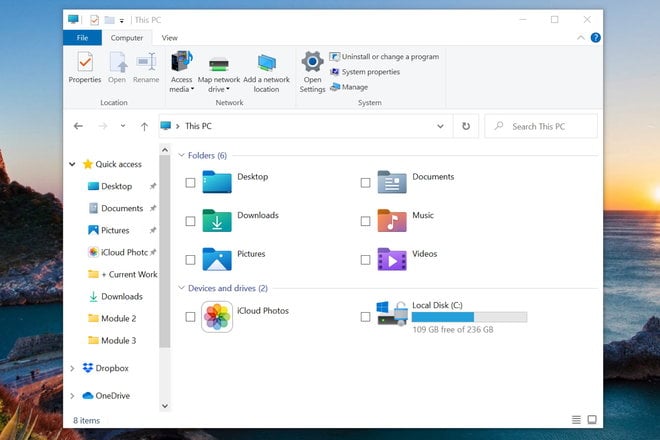
23 February 2021 – Sun Valley will introduce improved multitasking
The Sun Valley design update for Windows will apparently include enhanced snapping capabilities and making it easier to use. Soon you’ll be able to drag windows to the corner of the screen and those windows will then intuitively resize to fit perfectly. This should mean it’ll be even easier to multitask with side-by-side windows.
Apparently Aero Shake – where you shake a window to clear the desktop – will become an optional setting while there will also be the ability to have separate virtual desktops for each monitor.
4 January 2021 – Sun Valley set to be a “sweeping visual rejuvenation”
According to a job listing from Microsoft, Sun Valley is set to be a “sweeping visual rejuvination” of Windows. The listing says: “On this team, you’ll work with our key platform, Surface, and OEM partners to orchestrate and deliver a sweeping visual rejuvenation of Windows experiences to signal to our customers that Windows is BACK and ensure that Windows is considered the best user OS experience for customers.”
28 October 2020 – Interface refresh is called Sun Valley, OS is called Cobalt
The “significant design refresh” coming to Windows in 2021 is codenamed Sun Valley and will see many key elements given a refresh including the Start Menu, Action Center and File Explorer. The overhaul appears to be led by Microsoft Chief Product Officer Panos Panay.
The release is codenamed ‘Cobalt’ [at the time this seemed like a Windows 10 version, now it seems like a new OS version].
19 May 2020 – Microsoft plans more investment in Windows 10
It was clear earlier in 2020 that Microsoft would be investing in Windows 10 further. Windows Central says: “It’s fair to say that Microsoft has put Windows on the backburner in the last couple of years as it shifted focused to other efforts at the company… The fact that Microsoft spokespeople are using words like “reinvestment” when talking about Windows 10 is a breath of fresh air for Windows fans who have been calling for Microsoft to refocus their efforts on Windows.”
